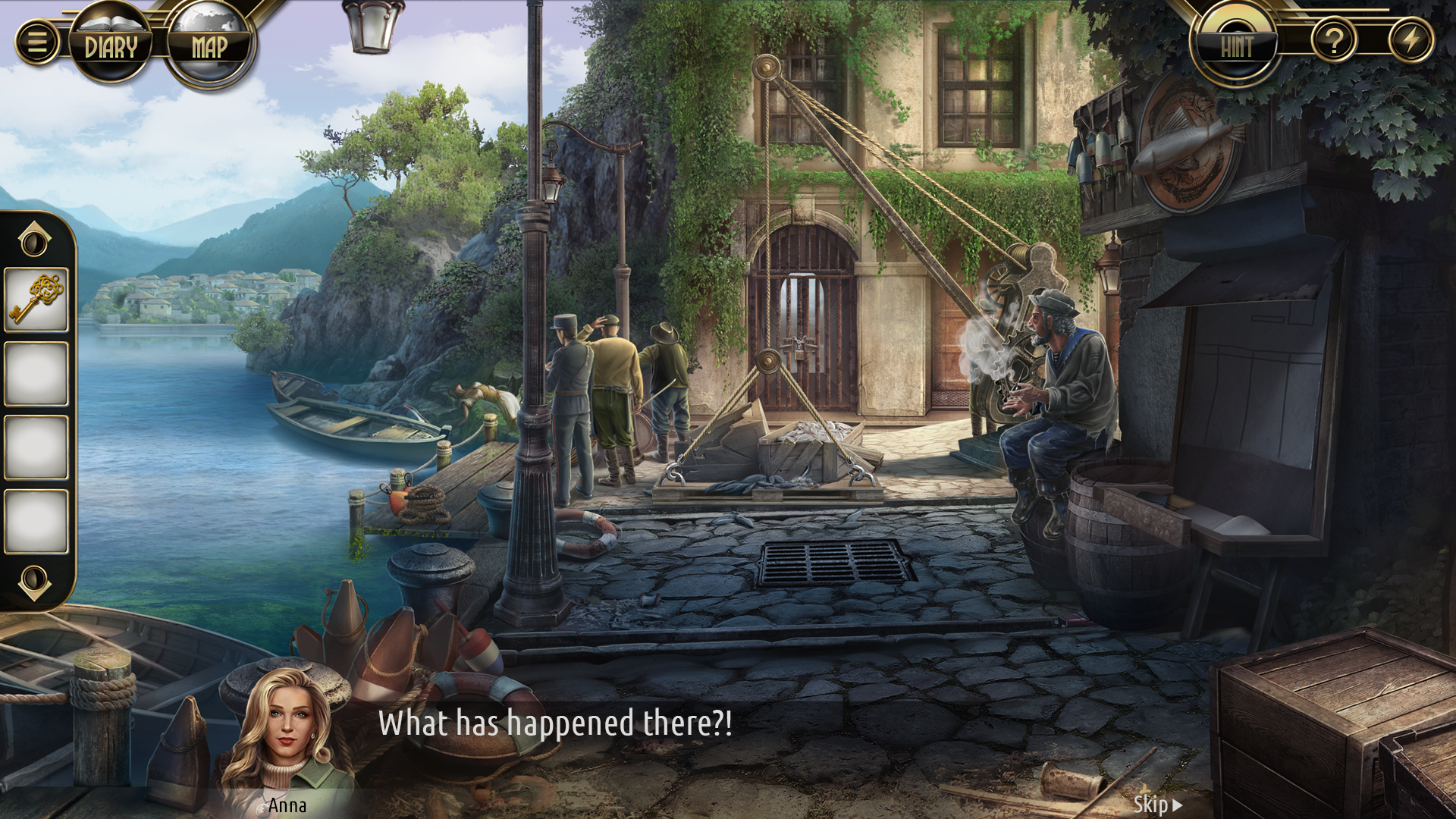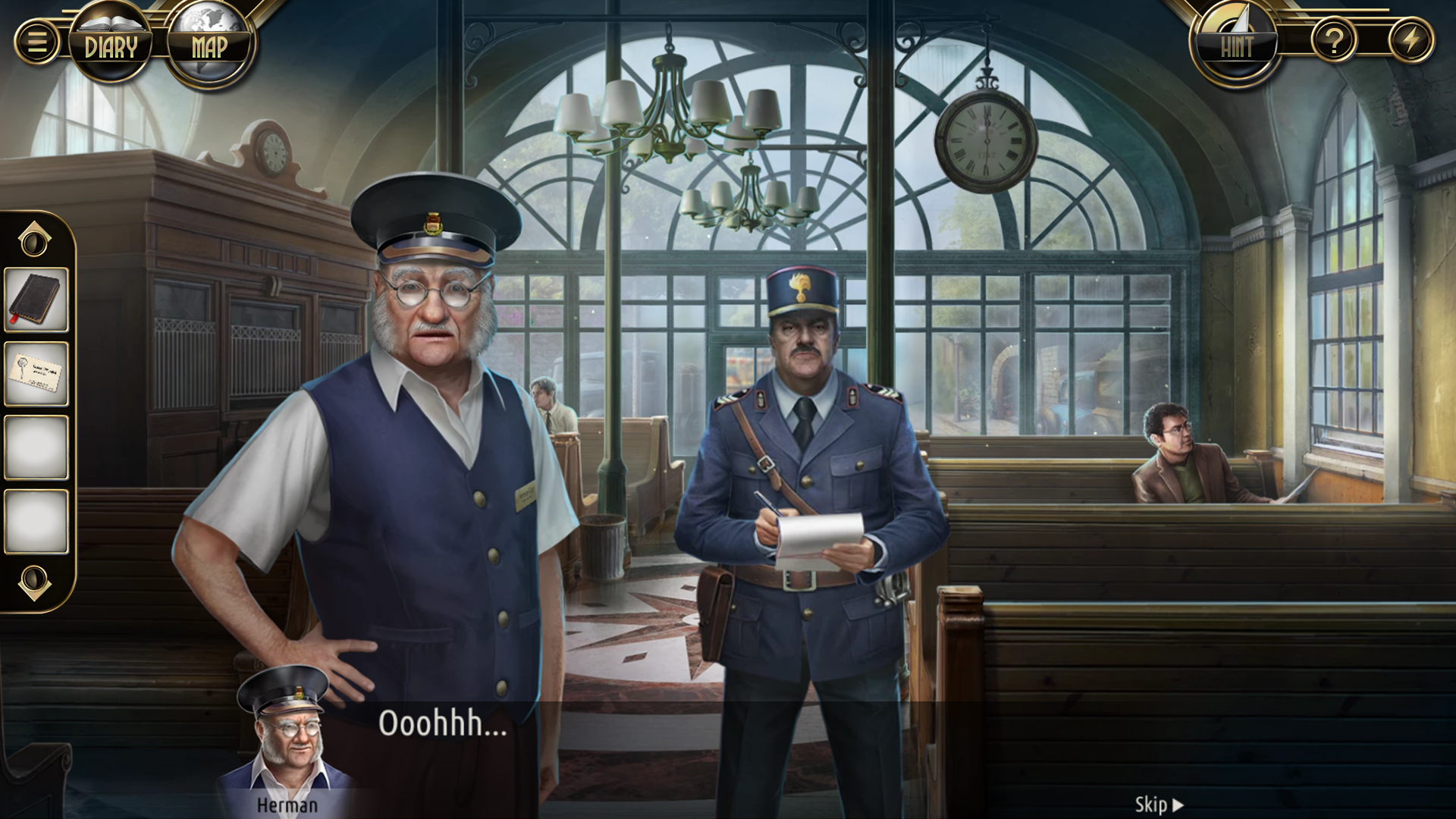"Developing a good hidden costs from $1 million" — interview with Nordcurrent
In early October, the Lithuanian studio Nordcurrent released a fritupley hidden “Murder in the Alps”. We asked the developers about how they worked on the project.
To the questions App2Top.ru The co-founder of Nordcurrent, Sergey Trofimov, answered.
Alexander Semenov, Senior Editor App2Top.ru : I’ll start with money. Is it more expensive today to make a hidden compared to games of other genres?

Sergey Trofimov
Sergey Trofimov, co-founder of Nordcurrent: In general, neither more expensive nor cheaper.
On the one hand, such games require a lot of art. On the other hand, the programming costs when creating them are much more modest.
According to my estimates, creating a good hidden will cost the same amount as developing a quality time manager or three-in-a-row.
Will you share the order of the amount?
Sergei: From a million dollars.
As for the “Murder in the Alps”, we spent a little more than on the usual development.
Why?
Sergei: We are very picky about the quality of the picture. Before the release, the graphics in the game were refined many times. But this is how it happens with all games. It wasn’t about the genre.
Why is it worth doing a hidden today? This is not the easiest and most profitable segment.
Sergey: If you start solely from the potential profitability when making decisions to launch projects, you will always be in the position of catching up. We try to pay attention to other factors: the workload of the market, the general interest of people in any topic (for example, detectives), and so on.
And what conclusions did you come to when you made the decision to launch “Murder in the Alps”?
Sergey: The market is definitely not loaded. There are only a few successful titles in this genre on it. At the same time, the industry for some reason decided that hiddens are a dangerous topic.
Attention: those millions of aunts who played thousands of hidden Big Fish Games have not gone away. Now they are sitting and grieving without new games.
Therefore, we decided to try to develop a hidden and at the same time revive interest in it. We are now “targeting” 25+ women with children and with valid credit cards.

That is, you can make good money here, and is it worth going into this segment?
Sergey: Look at our colleagues from G5 or Mytona. They are good with profitability. Moreover, it would be more correct to say about them — they are doing well with high profitability.
Touching on the question “Is it worth it today?”, I would like to remind you that when we started making Cooking Fever, many people also told us that time managers were dead. But we had a clear vision, we brought it to the end user — and, it seems, successfully. I think there will be a similar story with “Murder in the Alps”.
Yes, let’s move on to talking about the game. What are the pitfalls that are worth remembering if you are going to do hidden?
Sergey: The one pitfall is the scenario.
Suddenly.
Sergey: Why is that? If there is no persistent inner feeling that you know what kind of story you want to tell, how it will end, that your screenwriter will sit with you until the release, then it is better not to start development.
Screenwriters are, in my opinion, a special caste of people. Look at the conflict between Andrzej Sapkowski and CD Projekt. It would seem that all the papers are signed, all the rights and obligations are indicated, but no: the dude decided to hold a chickadee in his hands, and grab a crane from the sky. By the way, we had a very similar moment on another project – just as I remember, I shudder.
What’s the story?
Sergey: The first screenwriter changed budgets on the fly, and suspended work due to creative crises, and then just wrote a letter in which he accused us of all sins and unilaterally stopped working.
So I think that without making sure that the script is there or at least will be completed, I would not get into the genre.
And who wrote the script for “Murder in the Alps”?
Sergei: Screenwriters from the company’s internal reserves.
You know, all people have ever dreamed of writing a book or opening a pub (at least, these are the most popular dreams I know about). So, we helped two guys from Nordcurrent to make their unrealized dreams come true.

Are there really no pitfalls when working on hidden, except for the script? But what about monetization, balance adjustment, working with session duration?
Sergey: Look, the script for games in the spirit of “Murder in the Alps” is not just a plot. We had to significantly change the original concept in order to have more gameplay in the game. At the same time, it was important that he did not annoy the players, but was logically embedded in the narrative. There was a lot of work with game designers.
In principle, we did not want to have a classic story based hidden, in which fifteen of the twenty free phrases are oohs—sighs about nothing. We tried to keep everything on the case.
You mentioned that you initially had a specific concept, an idea. What was it?
Sergei: We knew that detective as a genre is very popular both in books and on TV. However, there are practically no detective games for mobile devices with a strong storyline on the market. And we decided to make such a project.
Plus, we didn’t want our game to resemble traditional hiddens, in which quests are bolted to scenes. Our goal was that the player could fully interact with the world of the game, could walk home, on the train, not make chaotic clicks, but meaningful actions.
It turns out that you have made a healthy roll towards the quest.
Sergei: We weren’t going to move into quests. It’s just that we initially wanted to make a game with a strong storyline so that the player, after completing the game, would have the feeling that he had just plunged into a very interesting detective story.
For the same reason, we followed the path of episodes, and not the path of locations. People like long, tricky stories. And we are ready to provide them with fritupleya sauce.
We tried to create the illusion of a series, a story that is endless, and everyone knows it, and everyone is waiting for the continuation.
Can you elaborate a little more on how the game session is built and the progress in the project?
Sergei: We followed the path of simple monetization so that everything was very clear to the player: every important action costs energy. I looked at the comic – be kind enough to lay out 20 energies, played a mini-game – take the trouble to lay out 30, took the object – give a five and so on.

How many people worked on the project?
Sergei: At first it was several artists, a screenwriter and a programmer. About five people. Then, when everything started spinning, they began to build up wherever possible. At the peak, in addition to the sprawling team, two graphic outsourcing studios worked for us.
You noted at the beginning of the conversation that a lot of emphasis was placed on graphics. How did this manifest itself?
Sergei: We immediately raised the bar very high. We wanted to make production value as cool as possible.
How is that?
Sergei: For example, we have a huge number of animations that do not seem to affect the gameplay in any way, but at the same time give players a sense of the depth of what is happening.
The waiter in our cafe does not just stand like a mannequin. He wipes the glass, looks to see if it’s clean, then wipes it again.
This is a small thing, but it creates the illusion that the scene is alive, that the player is in a real restaurant, and not just looking at one of the backgrounds.
At the same time, you have chosen not a cartoon, but a realistic style, which is more time-consuming.
Sergei: It took us a very long time to understand the general style of the game. The graphic concept was approved only from the third time. If we are talking about scenes, then everything was even tougher there: each scene went through 5-7 iterations.
At what stage did you release the softlonch game?
Sergei: We have released the first chapter in softonch. We wanted to understand if the audience would be interested in playing at all.
Successfully?
Sergei: Yes. But we found out that they lack content. Players laid out $50 for the IAP, passed the “Murder in the Alps” in one evening, and then a logical impasse ensued. They demanded a continuation that we were not ready to offer.

What did it take you to understand that the game can be released to the whole world? Have you added a lot of new content?
Sergei: Including, but in fact it was more complicated.
First, we calculated how much content is needed to make it profitable to release it to the whole world.
Then it was necessary to optimize some gameplay moments.
The monetization system has been modified several times. And I’m not just talking about the balance of the scenes. This includes global changes. We changed what we take energy for, what we give for, and, of course, how much we charge.
What kind of scheme did you come to in the end?
Sergei: From the main one, we first tried to give a full bar of energy a day, then eventually moved on to a gradual recovery.
There are a lot of technical details, they are unlikely to be interesting. For example, they made edits to where the player should finish the first session, thought about whether they should try to make the plot denouement fit into the daily amount of free energy or not, and so on.
What metrics have been achieved on the softlonch and what changes have had the most serious impact?
Sergei: If we talk about the most important thing, then, probably, these are the online requirements for the game and the transfer of the energy bill from the client to the server. So we blocked the possibility of using hacks, mods, substitution of saves.
What about metrics? What level of metrics has the game reached, after which you decided to publish it to the world?
Sergei: Look, we decided to develop the game further after the retention of the first day reached the 60% mark.
As for the worldwide release, it took place when we prepared enough content.
I see. Thanks for the interview.
P.S. According to the analytical service DataMagic, in its debut month, the earnings of the game (excluding the share of platforms) can reach $ 400 thousand.
According to the App Annie service, in the USA, the game in the category of puzzles and adventure games reached a plateau in the first three weeks. The cash register project is consistently in the Top 80 highest-grossing games of these genres.
